Is Science Becoming Conceptual Art?
A combination of new technologies may represent a new era for science, but one in which the lone scientist may no longer need her lab mates. Is that a good thing?
by Dan Cohen
When I teach the history of science to undergraduates, I often focus on major transitions in how science is practiced, from the theoretical mode of natural philosophy, to the advent of the lab and experimental approaches, to the rise of "big science" in the last century, dependent on massive, expensive instrumentation. Lately I've been wondering if a constellation of technologies has put us on the verge of another transition that will make science look and feel entirely different. And it strikes me that the best way to describe this new model is that science may become more like conceptual art.
The ingredients of this possible future have shown up in this newsletter before. In HI44, I discussed the cloud lab, a robotic laboratory that is remotely controlled by the scientist. The cloud lab isn't science fiction; it's here right now. The first academic cloud lab, at Carnegie Mellon, runs year-round, 24 hours a day, and has over 200 scientific instruments and 4,500 functions that can be combined in any sequence. All you need to operate it is a computer and an internet connection. Emerald Cloud Lab is the first commercial implementation of this concept. Expect many more of these cloud labs soon.
The labs use a programming language that has recently been open sourced, the Symbolic Lab Language (SLL). Recognizable and fairly simple for anyone who has done even a modest amount of coding, SLL not only creates a kind of lingua experimentum, it also facilitates the copying and porting of scientific approaches since they have to be spelled out in concrete, visible terms.
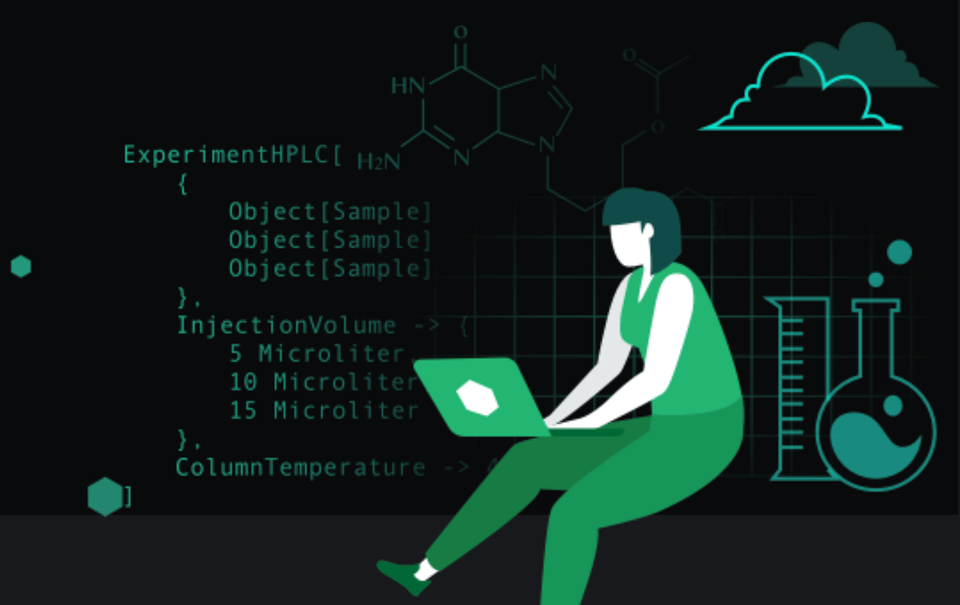
There are other ways to share these scientific recipes. For instance, my library subscribes to Protocols.io, which allows for the recording and sharing of experimental methods.
More recently, advances in AI have added other tools that can translate scientific notions into laboratory actions. For instance, CMU has developed "Coscientist," a large language model that can take a general expression of an imagined laboratory experiment and outline the specific actions needed, in order. In "Autonomous Chemical Research with Large Language Models," published in Nature in December, the Coscientist team showed how LLMs can read other studies, technical manuals, and scientific documentation to generate surprisingly effective step-by-step instructions for chemical experiments. The implementation of LLMs in lab environments is just beginning.
But let us think to the end of what all of these developments mean. One possible future is that access to powerful scientific experiments is greatly expanded, permitting not just those on the campuses of elite research universities, but anyone with scientific knowledge, to use the latest instruments and conduct cutting-edge studies with the click of a mouse. That would be an unalloyed good, as the cloud lab creators note; these labs are incredibly expensive, and a model that looks like the timesharing of a mainframe, from an earlier era of computation, would have significant, decentralized benefits.
Another possible future, however, is that the concept of the laboratory is hollowed out, as the principal investigator no longer requires her own lab. Instead, the PI becomes a kind of conceptual artist, only needing to envision an experiment, which can then be split into procedural chunks by the AI and SLL, and executed by the lab bots. That future is also hinted at in Emerald Cloud Lab's marketing: the lone scientist at her conception desk.
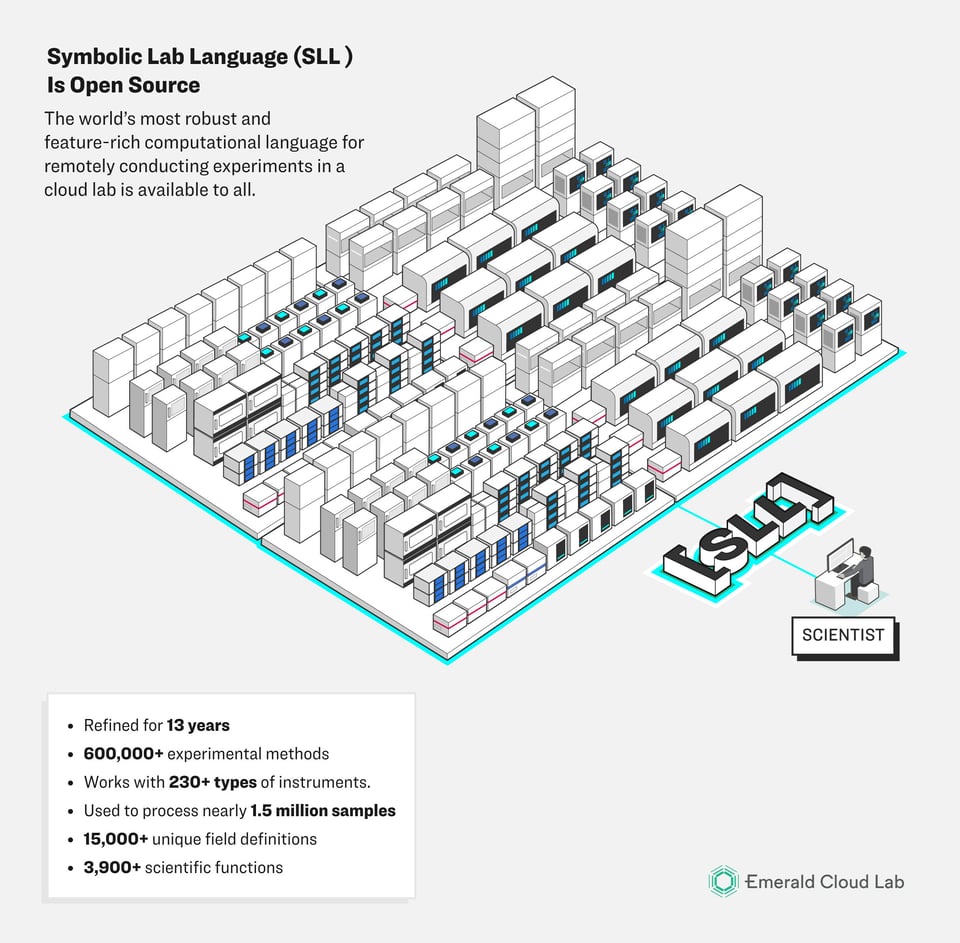
This future reminds me most vividly of the conceptual art of Sol LeWitt, who would write out fairly simple instructions for his art, and then have them executed in their entirety by others.
Wall Drawing 419: The wall is bordered and divided horizontally and vertically into four equal parts with a 6-inch (15 cm) black ink band. Each quarter has alternating parallel 6-inch (15 cm) bands of white and color ink bands. Upper left: gray; upper right: yellow; lower left: red; lower right: blue.
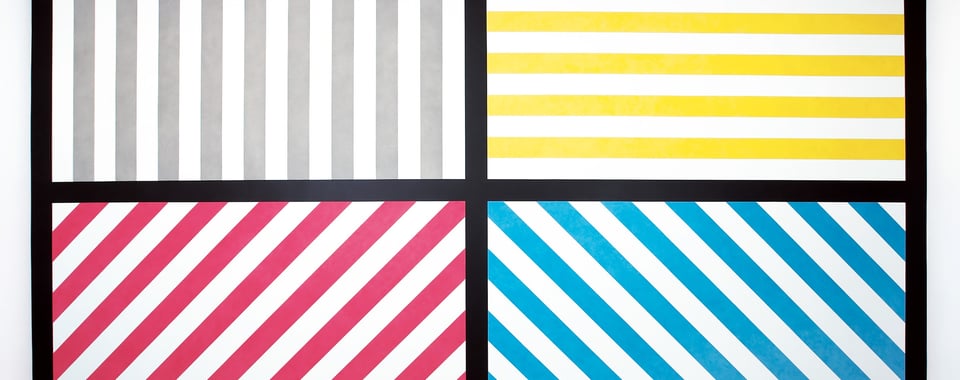
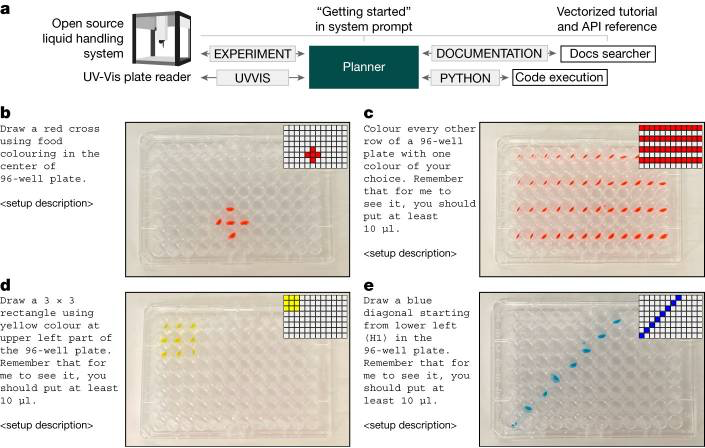
LeWitt's famous 1967 definition of conceptual art sounds a lot like the scientist supported by a cloud lab and using succinct language and AI to conjure experiments:
In conceptual art the idea or concept is the most important aspect of the work. When an artist uses a conceptual form of art, it means that all of the planning and decisions are made beforehand and the execution is a perfunctory affair. The idea becomes a machine that makes the art.
Of course, there are obvious differences between robot- and AI-assisted science and conceptual art. For scientists, the actual results of the experiment are important and should be replicable, and this reproducibility is another benefit of the cloud lab, since running an experiment again requires nothing more than the return key. For LeWitt, on the other hand, the actual results of a single implementation of one of his recipes mattered very little. Indeed, he reveled in the fact that different artisans ended up with different works of art based on the same brief text he gave them.
Yet even a partial similarity between science and conceptual art would represent a major change to the scientific enterprise and the possible demise of the modern laboratory. Since World War II, labs in universities, hospitals, independent research institutions, and federal agencies have brought together cohorts of undergrads, grad students, and postdocs. These teams are necessary for the day-to-day work of handling beakers and pipettes, but labs are much more than that: a training ground, a place for socialization, a way to communicate tacit knowledge, and yes, a collaborative center for discovery.
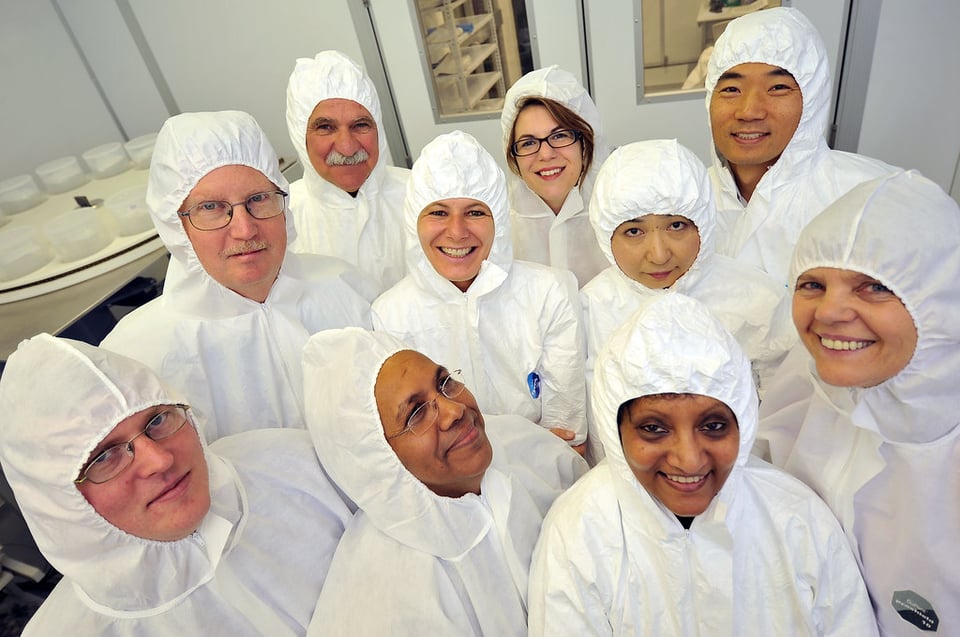
Without labs for bench science, how will science itself evolve? If the senior scientist no longer needs junior scientists, or scientists-in-training, how are new senior scientists going to emerge fully formed? Sol LeWitt achieved greatness in conceptual art because he was first highly trained in the actual arts — drawing, painting, and sculpture — and thus deeply understood its palette of colors, shapes, and scale, and their potential assemblies and variations. Only then could he give up the physical practice of artistry, handing over the actual execution to others. Without a similar span of learning and apprenticeship, how will tomorrow's scientists dream of novel ideas to be executed by the machines?